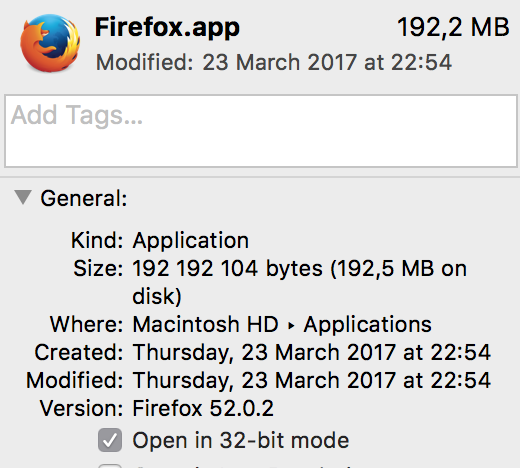How to fit all applications in 16 GB of RAM on macOS
 The title may seem strange to you if you are not using macOS, but if you use the products of the Apple ecosystem (especially laptops or iMac Retina 4K), you may encounter an unpleasant problem in the process: all the tools you need to work do not want to fit in 16 GB RAM, and the system begins to periodically "slow down" and use a large amount of compressed memory and swap.
The title may seem strange to you if you are not using macOS, but if you use the products of the Apple ecosystem (especially laptops or iMac Retina 4K), you may encounter an unpleasant problem in the process: all the tools you need to work do not want to fit in 16 GB RAM, and the system begins to periodically "slow down" and use a large amount of compressed memory and swap.There are a lot of trivial articles on the Internet, how to reduce memory consumption on macOS from the series “turn off unnecessary programs, install The Great Suspender for Google Chrome”, etc. If you have tried these tips and still suffer from a lack of memory, then I would like to share my experience on how I personally solve these problems.
General tips
I have to tell you about simple ways to control memory consumption on macOS (this advice works on both Windows and Linux):
- Open the “System Monitoring”, sort the applications by memory and stop using the applications that you do not need at the moment.
- Sort applications by the amount of compressed memory - if you find frequently used applications, it means that your system does not have enough RAM
- Take out “heavy” processes on separate servers, if possible (for example, compile Android applications on a separate machine)
Browser change
 You'd be surprised, but Google Chrome (and Safari) are not the only browsers available under macOS. Firefox also works great, and is one of the very few applications that support 32-bit mode.
You'd be surprised, but Google Chrome (and Safari) are not the only browsers available under macOS. Firefox also works great, and is one of the very few applications that support 32-bit mode.')
In theory, working in 32-bit mode can reduce memory consumption by up to 2 times, at the same time limiting the browser to 4 GB of memory from above (I would limit it even more if I had the opportunity). In reality, of course, the difference is not so big, but it is quite noticeable. Well, Firefox itself uses memory more economically, including because it has only 2 processes - one process for the UI and the second process for the contents of the tabs. Most likely, this advantage will decrease over time, but at the time of writing the article, Firefox consumed about 2 times less memory than Google Chrome in 32-bit mode and gave the memory back to the system much more readily when the extra tabs were closed.
Getting rid of Electron based applications
If you have Electron-based applications, such as HipChat or Slack, I highly recommend getting rid of them in favor of a separate browser tab, since Electron is actually Chromium, and it requires huge amounts of RAM to maintain its work (500-700 MB at the start).
Translation of applications in Low Resolution Mode
Some applications (for example, Telegram) may consume a lot of memory for what they do. Sometimes this is due to the screen resolution. On my iMac Retina 4K, one screenshot of the screen will occupy 4096 × 2304x3 = 28 megabytes of RAM. If the used software caches too many screen sections in memory, then transferring it to Low Resolution Mode (with loss of visual quality, of course) can, in theory, reduce memory consumption by 4 times. Putting Telegram into a low-res mode lowered its memory consumption on my computer from 500 MB to 150 MB - 3.3 times the difference!
Conclusion
This article turned out to be very short, but only because for me personally all these tips helped to completely get rid of the "lags" in the work of my computer related to the lack of memory. I still occasionally have processes that have a certain amount of compressed memory or even a swap, but this is usually a background daemon that does not affect user experience. If you have the opportunity to put in your computer more than 16 GB of memory, then I would recommend to do it, even if at the moment you do not need so much. On macOS, unfortunately, this possibility is only in the case of iMac Retina 5K and Mac Pro, and the latter is clearly not worth the money.
I hope this article was helpful to you, I will be glad to comment.
Source: https://habr.com/ru/post/326024/
All Articles